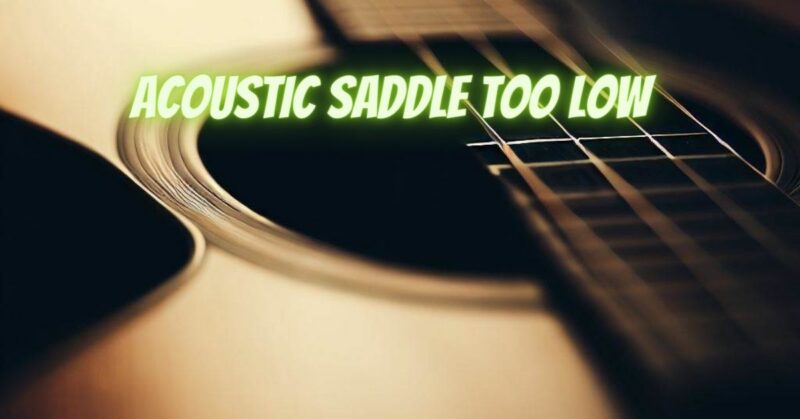The saddle of your acoustic guitar is a small but crucial component that directly influences your instrument’s playability and tone. Its position and height on the bridge play a pivotal role in transmitting string vibrations to the guitar’s soundboard. While achieving the perfect saddle height is essential for optimal performance, having a saddle that is too low can result in a range of issues. In this article, we’ll explore the implications of a too-low acoustic guitar saddle, how it affects your playing experience, and potential solutions to rectify the problem.
Understanding the Acoustic Guitar Saddle
Before we delve into the consequences of a too-low saddle, let’s briefly discuss its function:
- Saddle: The saddle is a small piece, often made of bone or synthetic materials, located on the bridge of your acoustic guitar. It acts as the point of contact for the strings, transmitting their vibrations to the soundboard and, ultimately, producing sound.
Consequences of a Too-Low Saddle
Having a saddle that is too low can lead to several issues that impact both playability and tone:
- Fret Buzz: A low saddle can result in strings coming into contact with the frets, causing fret buzz. This buzzing noise can be particularly noticeable when playing open chords or using a light touch.
- Poor String Action: String action refers to the distance between the strings and the fretboard. A saddle that is too low can result in excessively low string action, making it difficult to play cleanly and causing strings to “fret out” when played vigorously.
- Reduced Volume and Projection: A lower saddle can diminish the energy transferred from the strings to the soundboard, resulting in reduced volume and projection. Your guitar may sound quieter and lack the desired clarity and resonance.
- Altered Intonation: Saddle height affects intonation—the accuracy of your guitar’s pitches across the fretboard. A too-low saddle can lead to intonation issues, causing your guitar to sound out of tune, especially as you move up the neck.
- Tonal Imbalance: A low saddle can shift the tonal balance of your guitar. It may result in a muddier, less articulate sound with subdued treble frequencies and less overall clarity.
Causes of a Too-Low Saddle
Several factors can contribute to a saddle that is too low:
- String Tension: Over time, the tension from tightened strings can cause the saddle to sink into the bridge, reducing its height.
- String Gauge: Using lighter gauge strings may not provide enough downward force to keep the saddle at the proper height.
- Nut and Saddle Wear: Uneven wear or damage to the nut or saddle can affect saddle height.
- Guitar Maintenance: Improper guitar maintenance or string changes can lead to saddle height issues.
Rectifying a Too-Low Saddle
If you encounter a too-low saddle, there are several potential solutions:
- Saddle Replacement: Replacing the saddle with a new one of the correct height is often the most effective solution. A luthier or guitar technician can perform this replacement and ensure proper setup.
- Saddle Shims: In some cases, a luthier may use shims under the saddle to raise its height. This method should be handled by a professional to ensure accuracy.
- Nut Adjustment: Adjusting the nut height can also influence saddle height and overall string action.
- String Gauge: Experimenting with heavier gauge strings can increase downward force on the saddle, helping to maintain its height.
A too-low saddle on your acoustic guitar can lead to a range of issues affecting playability and tone. Regular maintenance, proper string choice, and professional adjustments can help prevent and address this problem. Ensuring that your guitar’s saddle is correctly positioned and at the right height is essential for achieving the best possible playing experience and tonal quality from your instrument.


